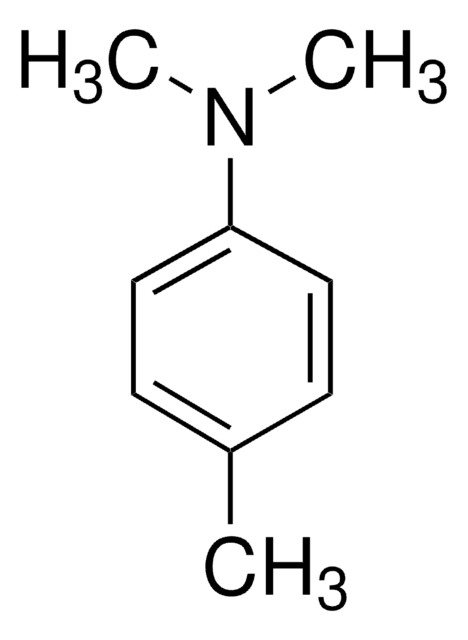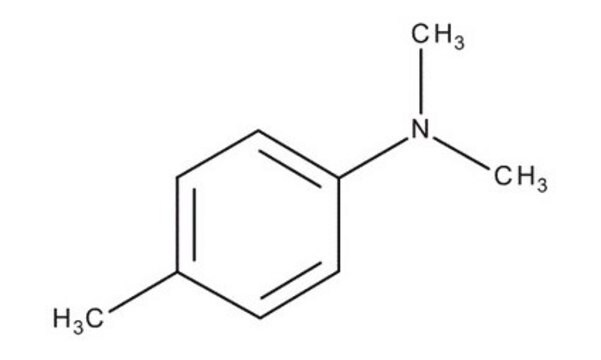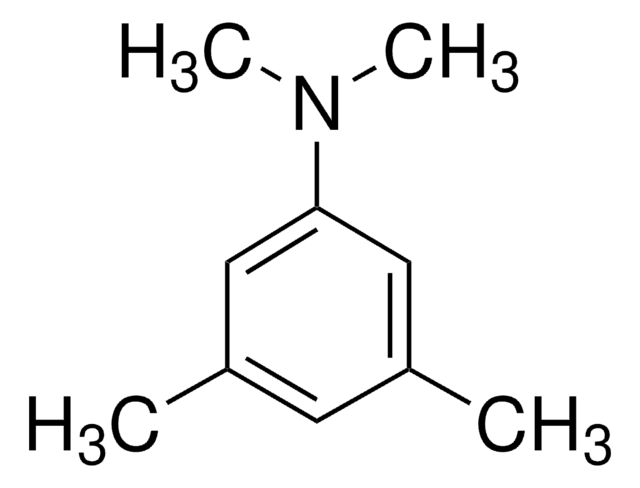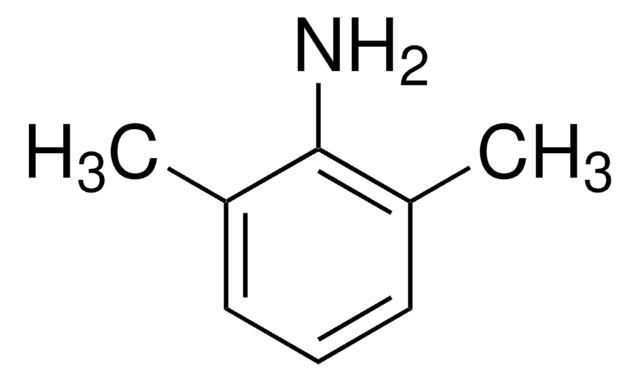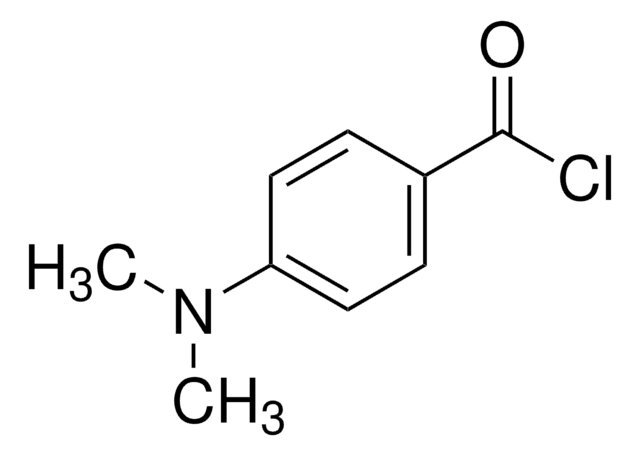추천 제품
vapor density
>1 (vs air)
Quality Level
grade
purum
분석
≥98.0% (GC)
형태
liquid
expl. lim.
7 %
refractive index
n20/D 1.546 (lit.)
n20/D 1.547
bp
211 °C (lit.)
90-92 °C/10 mmHg (lit.)
density
0.937 g/mL at 25 °C (lit.)
SMILES string
CN(C)c1ccc(C)cc1
InChI
1S/C9H13N/c1-8-4-6-9(7-5-8)10(2)3/h4-7H,1-3H3
InChI key
GYVGXEWAOAAJEU-UHFFFAOYSA-N
유사한 제품을 찾으십니까? 방문 제품 비교 안내
일반 설명
4,N,N-Trimethylaniline is a N-methyl-N-alkylaniline. Its reaction with vinyl ether catalyzed by CuCl2 has been reported to afford tetrahydroquinolines. Its radical cation undergoes reaction with the anthracene radical anion and generation of electrogenerated chemiluminescence (ECL) has been observed.
신호어
Danger
유해 및 위험 성명서
Hazard Classifications
Acute Tox. 2 Inhalation - Acute Tox. 3 Dermal - Acute Tox. 3 Oral - Aquatic Chronic 3 - STOT RE 2 Oral
표적 기관
Reproductive organs
Storage Class Code
6.1A - Combustible, acute toxic Cat. 1 and 2 / very toxic hazardous materials
WGK
WGK 3
Flash Point (°F)
168.8 °F - closed cup
Flash Point (°C)
76 °C - closed cup
개인 보호 장비
Eyeshields, Faceshields, Gloves, type ABEK (EN14387) respirator filter
Zoe M Wright et al.
Advanced healthcare materials, 10(2), e2001189-e2001189 (2020-12-17)
Graphene oxide and functionalized graphenic materials (FGMs) have promise as platforms for imparting programmable bioactivity to poly(methyl methacrylate) (PMMA)-based bone cement. To date, however, graphenic fillers have only been feasible in PMMA cements at extremely low loadings, limiting the bioactive
Xianghua Yang et al.
Molecules (Basel, Switzerland), 11(12), 978-987 (2007-11-17)
Tetrahydroquinoline skeletons can be formed by a CuCl2-catalyzed one-pot reaction of N-methyl-N-alkylanilines and vinyl ethers in the presence of t-butyl-hydroperoxide.
Jacob B Ketter et al.
Journal of the American Chemical Society, 126(32), 10183-10189 (2004-08-12)
Electrogenerated chemiluminescence (ECL) arising from the reaction of radical ions has previously be shown to arise from a variety of states including excited singlets, triplets, excimers, and exciplexes. In this work we describe two systems that form emissive states in
M Noda et al.
Journal of biomedical materials research. Part A, 83(1), 123-129 (2007-03-27)
Resin composites are widely used in dentistry, and are polymerized in situ using a blue-light activated, free-radical polymerization mechanism. Blue light (400-500nm) is used to activate camphoroquinone (CQ), which decomposes to form free radicals that are stabilized by dimethyl-p-toludine (DMPT).
Jennifer L Moreau et al.
Journal of biomedical materials research. Part A, 81(3), 594-602 (2006-12-21)
There is an increasing need to develop new biomaterials as tissue engineering scaffolds. Unfortunately, many of the materials that have been studied for these purposes are polyesters that hydrolytically degrade into acidic products, which may harm the surrounding tissue, and
자사의 과학자팀은 생명 과학, 재료 과학, 화학 합성, 크로마토그래피, 분석 및 기타 많은 영역을 포함한 모든 과학 분야에 경험이 있습니다..
고객지원팀으로 연락바랍니다.